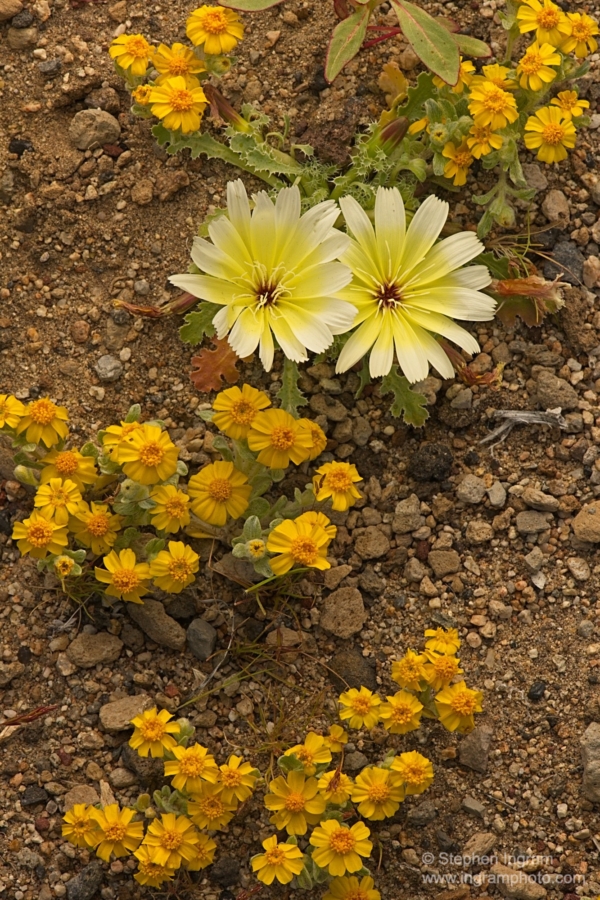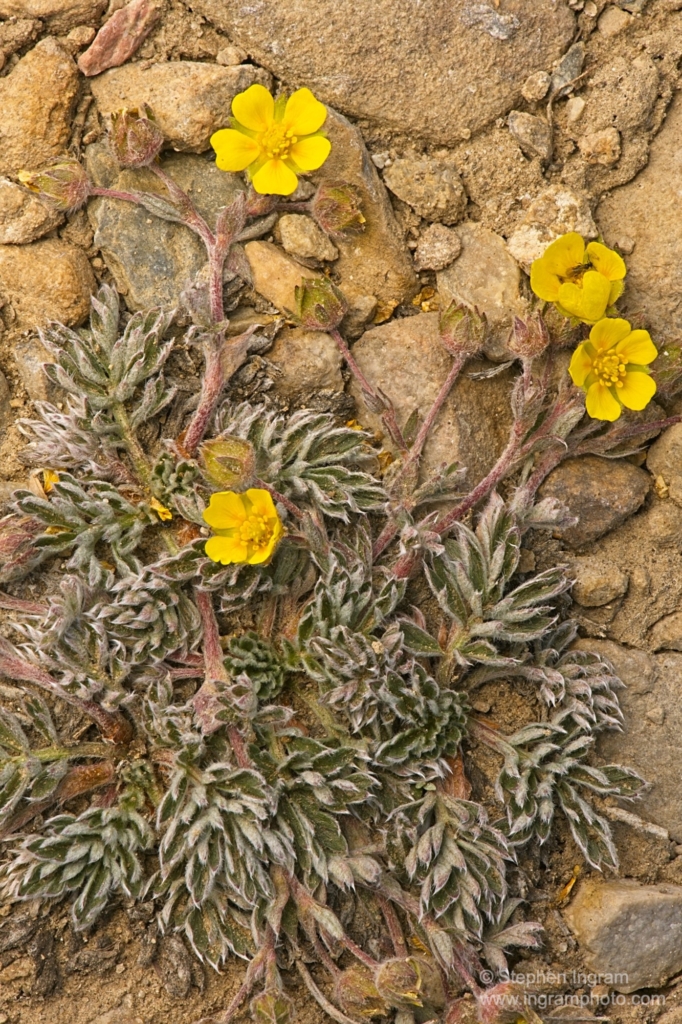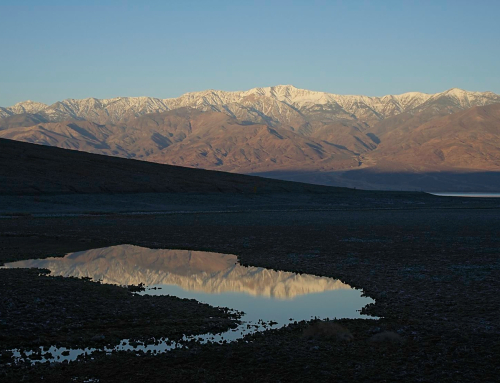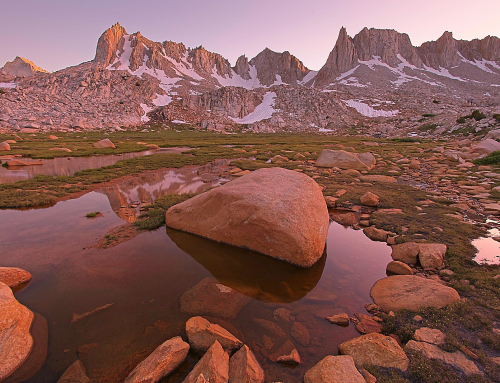2020 has been a strange and difficult year. We all know that, and you don’t need to read more about it here. Onward to 2021!
But first … a baker’s dozen of my favorite photos from 2020. These were all shot from a two-hour drive or less from where I live in Swall Meadows. I hope you enjoy them. Happy New Year!
First stop is Rose Valley just north of Fossil Falls. This is south of Owens Valley in the northern Mojave Desert, where there was an unexpectedly wonderful display of desert annuals from spring rains. From an image-critical viewpoint, these aren’t five-star photos, and the light wasn’t great, but the flowers were amazing! There were acres of purple thistle sage and yellow desert dandelion in bloom, as well as the less ostentatious flowers of holy dandelion at the northwestern extent of its Mojave Desert range.

April 2020. Joshua tree, Yucca brevifolia, above a carpet of desert dandelion, Malacothrix glabrata, Rose Valley, Inyo Co., CA.

April 2020. Holy dandelion, Glyptopleura setulosa, with woolly sunflower, Eriophyllum wallacei, Rose Valley, Inyo Co., CA.

April 2020. Little desert star, Monoptilon bellidiforme, growing through yellow pepper-grass, Lepidium flavum, Rose Valley, Inyo Co., CA
Spring is also the time for the birds and the bees and the butterflies… Painted ladies make their multigenerational migration from the deserts over the Sierra Nevada and on to central and coastal California and Oregon each year. They pass through the Eastern Sierra in March and April when desert peach is blooming. April also brought American kestrels back to our property where they have nested in a cavity in a large Jeffrey pine the last two years. We put up a kestrel nest box three years ago in another tree, and this year it was used and three chicks fledged. The amorous couple below are most likely the parents. It is no secret among the local kestrels, sharp-shinned hawks, and Cooper’s hawks that our house is a winter Mecca for dark-eyed juncos, white-crowned sparrows, and quail because of the birdseed we (especially Karen) make available. These three predators, and probably the northern pygmy-owl as well (see below), are happy to see (and eat) so many well-fed birds that they keep returning.

April 2020. Painted lady feeding on desert peach, Prunus andersonii, with Mt. Tom in background, Round Valley, CA.

April 2020. American kestrels mating, Swall Meadows, CA.

November 2020. A Cooper’s hawk watching quail from a burnt aspen well-used as a perch, Swall Meadows, CA.
Much of the summer was spent photographing flowering plants in the Ancient Bristlecone Pine Forest in the White Mountains. My wife, Karen, and our friend, Cathy Rose, and I are working on a Bristlecone Forest Wildflowers guide, similar to our Rock Creek Wildflowers book published in 2015. It has been a fun challenge trying to find photogenic examples of each species along the trails of the Schulman and Patriarch Groves. 2020 was a very dry year and flowers were sparse, especially at the “lower” elevations of 10,000 feet where we are working. The higher Patriarch Grove had a better showing of flowers than the Schulman Grove did, but all of the plants in the White Mountains still amaze us with their evolutionary resilience.

July 2020. Raspberry buckwheat, Eriogonum gracilipes, with weathered bristlecone wood, Patriarch Grove, Ancient Bristlecone Pine Forest, White Mountains, CA.

Morefield’s cinquefoil, Potentilla morefieldii, Patriarch Grove, Ancient Bristlecone Pine Forest, White Mountains, CA

July 2020. Rock spiraea, Petrophytum caespitosum, Methuselah Trail, Schulman Grove, Ancient Bristlecone Pine Forest, White Mountains, CA.
When smoke from the monstrous, record-shattering Creek Fire abated for a few days in October (and before the Inyo National Forest was closed off), I got out for a little fall photography. The cool nights and dry weather made for an ideal transition to good fall leaf color this year. The image below is a reflection of an aspen-forested slope in Rock Creek Canyon that has been flipped 180 degrees to look right side up. There is a slight blur from the slowly moving water that I thought added a painterly quality and gave this a more unusual look.

Aspen and willow reflections in Upper Rock Creek Canyon, Inyo National Forest, Eastern Sierra, CA.
The high winds that accompanied the low-pressure weather system which spurned these dramatic lenticular clouds peaked late at night in Swall Meadows at 73 mph. Strong winds that night of November 17 also pushed an unstoppable firestorm through the town of Walker in northern Mono County. The Mountain View Fire burned over 60 homes, killed one person, and became the most destructive in Mono County history, eclipsing the Round Fire of 2015. This was the capper on what was the worst year ever for wildfires in California.

November 2020. Altocumulus lenticularis cloud formations above Round Valley, from Willow Road, Swall Meadows, CA.
A cute little owl brought us an amazing gift the day after Christmas as it perched outside our kitchen window for 20 minutes. How sweet he looked. This little fluff ball, about the size of a puffed up white-crowned sparrow, is, however, a fierce predator, known for taking out quail and other birds three times its size. The authors of the excellent Birds of the Sierra Nevada wrote that “Gram for gram, they are the most deadly beasts in the forest.” The authors also note that the pygmy-owl has been observed killing a chicken 60 times its weight—comparable to a great horned owl taking out a 200-pound man! Just to drive that point home, our little bad-ass friend here had a blood-stained beak and feathers stuck to its lower beak from a recent meal. (Apparently, the heated birdbath was not to his liking.) Glaucidium gnoma, the “little owl that glares,” is our only diurnal owl, seen here glaring at a dark-eyed junco. This owl flew off without making a kill—this time.

December 26, 2020. Northern pygmy-owl perched in young cottonwood, Swall Meadows, CA.
I was rewarded one night in the White Mountains with some rain followed by a spectacular sunset. From this high vantage point, the Sierra spans about 40 miles, from massive Mt. Tom on the left to near Carson Peak on the right. The small reflection near the bottom of the frame, left of where the sun set, is Crowley Lake.

July 2020. Clearing cumulonimbus and altostratus clouds above Sierra from Ancient Bristlecone Pine Forest, White Mountains, CA.






